Arms of Duke Julius of Brunswick-Wolfenbüttel @ Thomas Del Mar Ltd
A Brunswick state two-hand processional sword of the guard of Julius, Duke of Brunswick and Lüneburg in Wolfenbüttel (1528-89), N°. 237, dated 1573. photo Thomas Del Mar Ltd
with straight double-edged blade of flattened diamond-section, rectangular ricasso formed with a pair of slender up-turned lugs in the middle, boldly incised with the crowned Ducal monogram, the number and the date within a linear frame on each side, iron hilt comprising a pair of ribbon-like quillons each interrupted by a fish-shaped moulding and engraved with scrolling foliage (one quillon expertly repaired), curled forward and back at the respective down-curved terminals, a pair of small flat engraved serpentine lugs at the base, engraved inner and outer ring-guards, each interrupted with three baluster mouldings and filled with a saltire, the former with thumb-ring, thick pierced crutch-shaped pommel, and later leather-covered wooden grip; 133cm; 52 1/2in blade - Estimate £10000 - 15000
Note: Duke Julius of Brunswick-Wolfenbüttel (1528-1589) inherited the title following the death of his two older brothers in battle. He was a keen supporter of the Reformation and introduced it into the Duchy of Wolfenbüttel. This provided a sharp contrast to his father, a devout Catholic who was violently polemicised by Luther in his Wider Hans Worst of 1542. In a letter of 1571 Julius described himself as a ‘rough old Brunswick Saxon after the old German fashion’. However, he was a ruler of considerable practical ability and energy and a highly talented administrator. In this capacity he provided strong support to industries such as mining and metalworking and consequently brought considerable wealth into the Duchy. During his reign, according to a description of 1585, the Zeughaus included several rooms: “Lange Rüstkammer, Kleine Kammer nach dem Zimmerhof, Harnischkammer, Lange Kammer und Oberste Kammer” and is specifically mentioned as one of the highlights of the castle tour for visitors in 1578.The following processional sword was made for the Guard of Duke Julius. The shape of the cross-guard and pommel is a unique Brunswick feature. The swords from the Ducal Guard are all numbered and may be divided into two series, one dated 1573 and the other 1574. The blades are generally inscribed with the date, an arsenal number and the crowned Ducal monogram IH. There are minor variations within each series, such as the inscribed pommels which are apparently only encountered on the swords of 1573, while the pommels of the 1574 series are of hooked construction. It would appear from the numbered swords extant that there were a total of around 600 swords of this group - with numbers in each series being recorded in the 290's. In 1573 a sword was delivered to Wolfenbüttel by the armourer Wolf Gabriel and it has been suggested that this was possibly a prototype for this group. Given the large number of differing bladesmith's marks and the variation in minor details it is likely that the order for both the 1573 and 1574 swords was contracted to a large number of swordsmiths. It is probably that this group was originally stored in The Wolfenbüttel Zeughaus and transferred to The Brunswick Zeughaus when the family moved from Wolfenbüttel in 1753/54. The inventory of the Hanover Zeughaus in 1854 records six swords from this group, three dated 1573 and three dated 1574. A document describing the decoration of Schloss Blankenburg in 1868 with arms and armour from The Brunswick Zeughaus records thirty-six swords which are probably from this group.
The following two lots are part of a group of armours and elements of armour that are distinguished, among other things, by its finely etched decoration involving, at the left of the breastplate, a representation of Daniel in the Lion’s Den enclosed within an inscribed circular or quatrefoil border and usually, as in the present instance, accompanied by a crowned heart flanked by clasped hands and the initials ‘H’ and ‘I’. Of the twenty-two recorded armours or detached breastplates belonging or relating to this group eight were, until recently, in the Blankenburg and Marienburg collections while two are in the Philadelphia Museum of Art (acc. nos 1977.167.19 & 23) and one each in the Metropolitan Museum of Art, New York (acc. No. 14.25.71), the Higgins Armoury Museum, Worcester, Massachusetts (inv. no. JWHA 935), the Cleveland Museum of Art, the State Hermitage Museum, St Petersburg (inv. no. I 78), the State Historical Museum, Moscow, the Musée des Arts Décoratifs, Paris, the Hofjagd and Rüstkammer, Vienna (A 400 and 705), the collection of H. M. The Queen, Windsor Castle (cat. no. 111), the former Schlesisches Museum, Breslau, the Welfenmuseum, Hanover, and a private collection. The presence within the decoration of the majority of these armours of a crowned heart flanked by clasped hands and the initials ‘H’ and ‘I’ led to the long-held belief that they were made for the festivities associated with Duke Julius’s marriage to his niece Hedwig, daughter of Joachim II, Elector of Brandenburg in Berlin on the 25th of February in 1560. A recent reappraisal of the evidence however, reveals that this can not have been the case as two of the group are dated 1562 and another 1563. Moreover the initials ‘H’ and ‘I’, constitute the normal monograph of Duke Julius and refer to ‘Herzog Julius’, not ‘Hedwig’ and ‘Julius’. The image of Daniel in the Lions’ Den (Daniel 6:16-24) was a popular one among Protestants in the mid-16th century being found, for example, on a Lower Saxon tapestry dated 1550 and on the ‘Daniel-Taler’ of the Regent Maria von Jever, dated 1561, and symbolising their precarious position among the Catholic States of Europe. The inscription that borders the image on the armours was perhaps inspired by St Paul’s line, ‘Now may the God of Peace Himself sanctify you entirely; and may your spirit and soul and body be preserved complete’ (1Thessalonians 5:23). The so-called ‘wedding’ armours of Duke Julius represent the apogée of the Brunswick armourers’ craft. Their fine decoration, showing a curious mixture of biblical, classical, sporting and heraldic subjects is based on the graphic works of such diverse artists as Cornelius Bos, Virgil Solis and Cornelius Floris. Because of the incompleteness of the ducal account books prior to 1568, the authorship of the ‘wedding’ armours remains unrecorded. Foremost among the Brunswick armourers of the 16th century were members of the Gabriel family, among whom Claus Gabriel the Younger (recorded 1551 to 1596 and for a while Mayor of the City) and Wulf Gabriel (married 1560, appointed Ducal Armourer in the Zeughaus at Wolfenbüttel 1572, died 1581) could conceivably have been the maker of at least some of the ‘wedding’ armours. See A. Von Rohr, Z.H.W.K., 1988.
An etched north German breastplate, Brunswick, circa 1560-65. photo Thomas Del Mar Ltd
formed of a heavy main plate with a strong medial ridge projecting forwards over the belly (so-called Tapulbrust), fitted with a stud beneath the centre of the neck-opening for a buffe (chipped, gussets and waist-plate missing), the neck with finely roped turn interrupted with a central moulding, the left shoulder with a portion of a later buckle for a strap, etched with at the left of the chest with a representation of Daniel in the Lion's Den attended by the prophet Habakuk and an angel within a quatrefoil border inscribed 'ACH.HER.MEIN.GOT. BEHUT.MICH.NICHT.MER.DAN.SEL.ERE.UND.LEIB.IVLIUS.H.Z.B.V.L' over a crowned heart flanked by clasped hands and the initials 'H' and 'I', and in three vertical bands and an ogee-shaped border at the neck with scrolling foliage involving a hunting scene at the neck, and in the left and right bands respectively with the standing figures of Judith with the head of Holofernes and Salome with the head of John the Baptist, all on a stippled and blackened ground and enclosed within beadwork frames (extensive rust patination, the etching obscured in places);32.5cm; 12 3/4in high - Estimate: £10000-12000
Literature:Dr. J. Fastenau, Die Waffensammlung, 1910, no. 26.
A fine north German etched backplate, Brunswick, circa 1555-65. photo Thomas Del Mar Ltd
formed of a mainplate, well shaped to the shoulders, the neck and arm-openings decorated with file roped inward turns accompanied by recessed borders enclosed at their inside by a single flute, fitted at its lower edge with a waist lame flanged outwards to receive a culet, etched in three diverging bands and in the main border with scrolling foliage involving sea-monsters, cornucopia, flowerheads and, in the central band, the figure of Eve standing on a skull and holding an apple, all on a stippled and blackened ground (areas of wear and patination);34cm; 13 3/8in high - Estimate: £4000-5000
A Brunswick embossed iron patron, no.20, dated 1571, for a member of the guard of Julius, Duke of Brunswick and Lüneburg in Wolfenbüttel (1528-89). photo Thomas Del Mar Ltd
with plano-convex body flanged at the base, domed lid hinged at the back and closed by a spring-catch at the front, embossed and chiselled with a cabled panel interrupted by the Ducal monogram, enclosing a lion mask supported by arched ribbons over the date, the crowned Ducal monogram and number, a pair of rampant lion supporters left and right, and all in low relief on a stippled ground, the lid embossed and chiselled with the crowned Ducal monogram and lion supporters, with an associated brass facing plate for a core of five apertures, and later wooden core, back and basal plate; 14cm; 5 1/2in high - Estimate: £6000-8000
Another patron from this group is illustrated R. Bohlmann 1915 p.24, abb. 56. A further example was included in the Exhibition of Arms, Armour and Militaria lent by H.R.H. The Duke of Brunswick at the Tower of London, April 10th-October 31st 1952, no.188, and another is preserved in the Metropolitan Museum of Art, New York.
A north German close helmet, circa 1560-80, probably Brunswick.
with rounded one-piece skull rising to a roped medial comb and fitted at the nape with a plume-holder (the skull with an early patched repair and one small hole), visor, upper bevor and bevor attached by common pivots (replaced), each secured at the right side by a spring-catch (that for the visor missing its lifting-peg), the visor with stepped centrally-divided vision-slit and pierced with six rectangular and four circular ventilation holes and a pair of holes for the attachment of a brow reinforce, the prow-shaped upper bevor pierced with circular arrangements of ventilation holes, two gorget-plates front and rear (rusted throughout) and later leathers; -40.6cm; 16in high - Estimate: £4500-5500
A north German breastplate, Brunswick, circa 1560-70. photo Thomas Del Mar Ltd
formed of a heavy main plate with a strong medial ridge projecting forward over the belly (so-called Tapulbrust), struck at the centre of the neck-opening with a serial mark comprising seven small circles and pierced beneath for a staple for the attachment of a buffe, moveable gussets at the arm openings, fauld of a single lame fitted with pierced stud for the attachment of an extension, the main plate decorated around the neck with a pair of incised lines forming an ogee-shaped border and a cabled band beneath (rusted, areas of pitting), and the neck and gussets with file-roped inward turns;34.5cm; 13 5/8in high - Estimate: £3000-5000
The cabled or cord incised around the neck of the breastplate was perhaps the insignia of an officer. It can be compared with the diagonal chain occurring on the breastplate of two armours formerly in the Blankenburg and Marienburg collections. See R. Bohlmann, 1915, nos 10 and 11, figs 34-5, and the backplate of lot 285 Sotheby's, Marienburg, October 2005.
A German sporting crossbow, late 16th century. photo Thomas Del Mar Ltd
with steel bow struck with the two marks (Neue Støckel 6451) retained by later cords, fitted with an adjustable steel collar joined by a steel stirrup on each side of the tiller and later string, hardwood tiller veneered with engraved staghorn plaques top and bottom, the latter decorated with two allegorical figures including fortune beneath the bow, a green man mask centring on an aperture for inserting loading rods, and profile masks on each side of the mechanism, the sides of the tiller finely inlaid with engraved staghorn plaquettes, including a running pattern of scrolling foliage, ball flowers and profile masks, the top of the tiller fitted with a later wooden bar for use as a slurbow, iron nut, iron trigger-guard and a pair of iron lugs for loading (the inlay with minor losses and wear, small chips, the butt-plate missing); 59cm; 23 1/4in tiller - Estimate: £3500-4500
Literature: Dr. J. Fastenau, Die Waffensammlung, 1910, no. 184.
It would appear that this was modified for use as a slurbow in the early 19th century, probably when the string and cords were replaced.
A German two-hand processional sword, early 17th century. photo Thomas Del Mar Ltd
with double-edged blade of flattened-hexagonal then flattened-diamond section, rectangular ricasso cut with a pair of lines and stamped with a series of dots, iron hilt comprising a pair of slightly down-curved flat quillons with shaped terminals, each interrupted by a moulding and formed with a slender curled lug beneath, inner and outer ring-guards each interrupted by a circular central moulding framed by a pair of incised lines and filled with a plate, later globular pommel and later turned wooden grip; 117.5cm; 46 1/4in blade - Estimate: £2000-3000
A German two-hand processional sword, late 16th/early 17th century. photo Thomas Del Mar Ltd
with double-edged blade of flattened-diamond section, long rectangular ricasso formed with a pair of crescentic lugs and incised with a pair of lines on each side, iron hilt comprising a pair of down-curved quillons with tightly curling terminals formed with a further pair of scrolled terminals behind, inner and outer ring-guards each filled with a fleur-de-lys, decorated throughout with scrollwork, later large globular pommel, and later turned wooden grip;137.8cm; 54 3/8in blade - Estimate: £2000-3000
A pair of north German tassets of adjustable length, Brunswick, circa 1560-70. photo Thomas Del Mar Ltd
each formed of eight lames divisible between the fourth and fifth, the top lame with three buckles for suspension, detachable poleyns of four lames with a small centrally-puckered oval side-wing, decorated throughout with roped turns and fitted with some later pewter rosette washers (small cracks and laminations, small areas of rust, releathered); 51.5cm; 20 1/4in;(2) -Estimate: £2000-2500
A pair of north German tassets of adjustable length, Brunswick, circa 1560-70. photo Thomas Del Mar Ltd
each formed of eight lames divisible between the fourth and fifth (the left partly disarticulated), the top lame with three buckles for suspension, detachable poleyns of four lames with a small flat oval side-wing, decorated throughout with roped turns and with bright recessed bands on a black ground, and fitted with a number of later original brass rosette washers (areas of pitting, releathered); 44cm; 17 3/8in; (2) - Estimate: £2000-2500
A north German boar spear from the hunt of Julius, Duke of Brunswick and Lüneburg in Wolfenbüttel (1528-89), N°. 13, dated 1571. photo Thomas Del Mar Ltd
with leaf-shaped blade, stamped with a mill wheel mark, etched with the crowned Ducal monogram 'HI' supported by a pair of lions, the number and the date on each side (light wear), on an early wooden haft bound with a trellis pattern of leather retained by brass domed rivets; 29.5cm; 11 3/4in head - Estimate: £1200-1800
Exhibited : Arms, Armour & Militaria lent by H.R.H. The Duke of Brunswick at the Tower of London, April 10th-October 31st 1952, cat. No.97.
A German halberd, mid-16th century. photo Thomas Del Mar Ltd
with central knife-like blade formed with a single cutting edge, axe-blade with near-straight leading edge, off-set triangular fluke cut with a pair of cusps beneath, stamped with a mark on one side, and a pair of long straps, on a wooden haft; 52cm; 20 1/2in head - Estimate: £1000-1500
A German etched halberd, circa 1580-90, probably Brunswick. photo Thomas Del Mar Ltd
with broad medially ridged leaf-shaped central blade etched with a chevron pattern on each side, small crescentic axe blade stamped '15' on one side, slender fluke formed with an up-turned lug and struck with a clover leaf mark on one side, faceted socket and a pair of plain straps, on an early wooden haft carved with a nodular pattern (the centre wormed and now in two pieces), with a spiked iron shoe; 45.6cm; 18in head - Estimate: £800-1500
A halberd of similar form and struck with the same mark was sold Sotheby's, Marienburg, October 2005, lot 260. Another is preserved in the Landeszeughaus, Graz.
Two north German gauntlets for the right hand, Brunswick, circa 1560-70. photo Thomas Del Mar Ltd
the first with flared pointed cuff, fixed inner plate, five metacarpal-plates, shaped knuckle-plate and five shaped finger-plates (thumb-defence missing), embossed with recessed panels in the so-called black-and-white fashion, and the cuff with turned roped edge, accompanied by later pewter florette washers; the second with flared rounded cuff, fixed inner plate, four metacarpal-plates, shaped knuckle-plate and five shaped finger-plates (thumb-defence missing, the cuff now detached), the cuff with turned roped edge, and retaining most of its original brass florette washers;(2) - Estimate: £500-800
Two north German vambraces, Brunswick circa 1580. photo Thomas Del Mar Ltd
each formed of a tubular upper and lower cannon, the former fitted with a turner of three lames, bracelet couter of three lames, one decorated with incised lines and plain turned edges, and the other with roped turns and fitted with some later pewter rosette washers (the uppermost left lames associated); (2) - Estimate: £700-900
Two north German vambraces, Brunswick circa 1580. photo Thomas Del Mar Ltd
with minor differences, each formed of a medially ridged tubular upper and lower cannon, the former fitted with a turner of two and three lames respectively, winged bracelet couter of three lames, the main edges with roped inward turns, and each decorated with later brass rosette washers; (2) - Estimate: £700-900
A pair of German vambraces from a black and white armour, circa 1580, possibly Brunswick. photo Thomas Del Mar Ltd
with minor differences, each formed of a tubular upper and lower cannon, the former fitted with a turner of three lames on the left and two on the right, bracelet couter of three lames (one patched), and the main edges with roped inward turns; (2) - Estimate: £700-900
A north German skirt for a breastplate, Brunswick, circa 1560-70. photo Thomas Del Mar Ltd
formed of three lames divisible between the first and second, the latter fitted with a hook on each side, and the lowest lame decorated with a roped edge accompanied by later pewter florette washers - Estimate: £500-700
Two besagews, probably north German, 16th century. photo Thomas Del Mar Ltd
of circular convex form, each rising to a central point and with turned roped edge, in one case accompanied by a recessed border; 12.7cm; 5in - 14.3cm; 5 5/8in;(2) - Estimate: £150-250
Thomas Del Mar Ltd . Antique Arms, Armour & Militaria Sale. Wednesday 8th December 2010

/https%3A%2F%2Fprofilepics.canalblog.com%2Fprofilepics%2F1%2F0%2F100183.jpg)

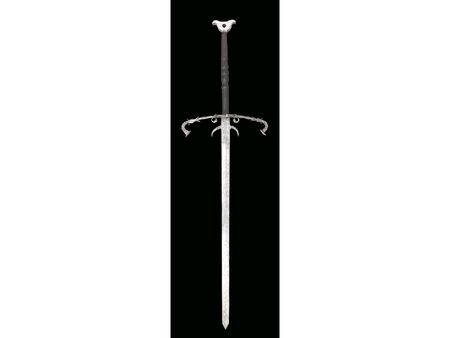
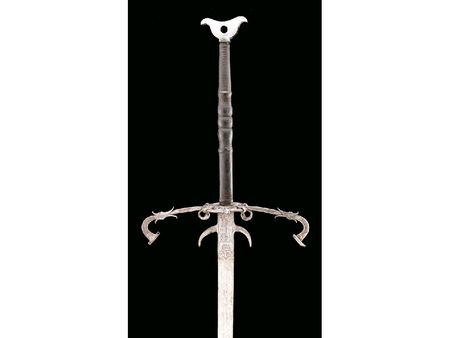

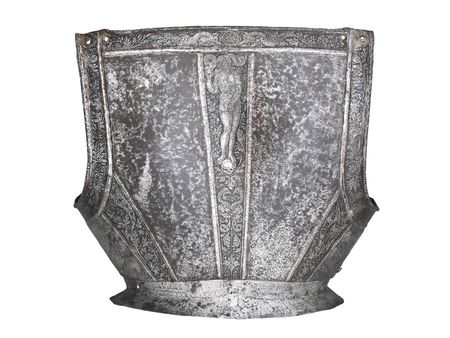



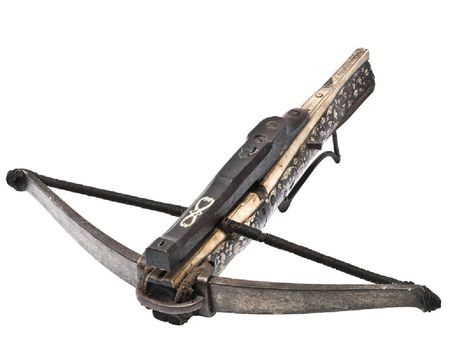
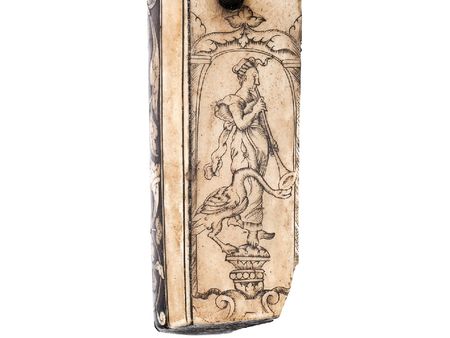

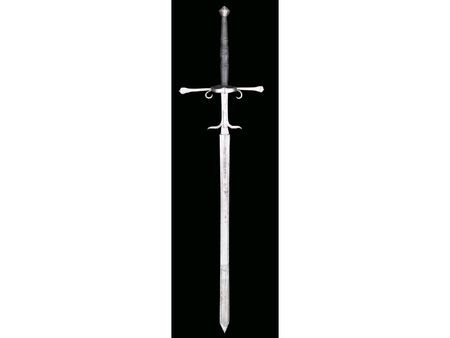



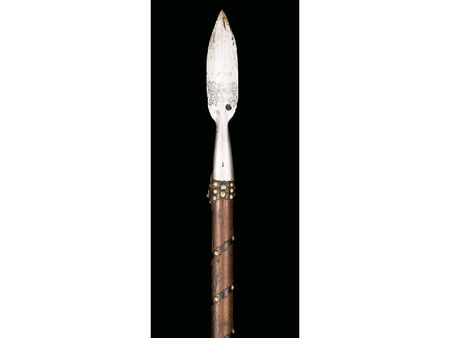

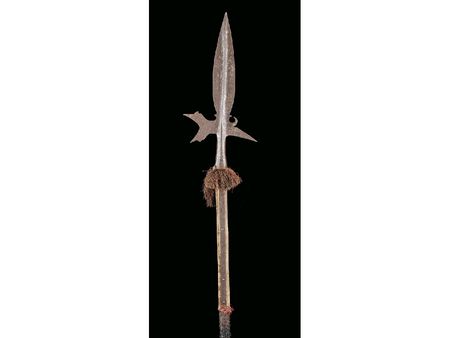
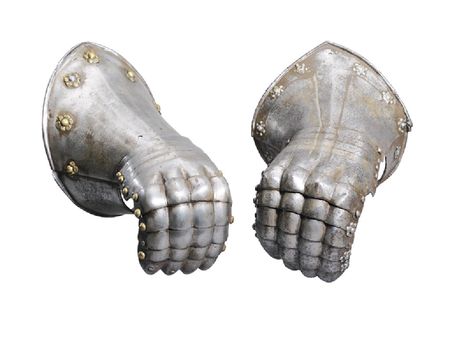




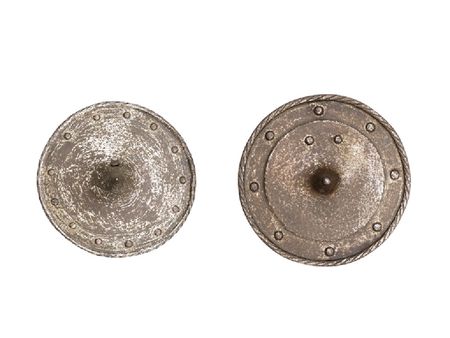


/http%3A%2F%2Fstorage.canalblog.com%2F44%2F22%2F577050%2F66285653_o.jpg)
/http%3A%2F%2Fstorage.canalblog.com%2F93%2F97%2F119589%2F66078328_p.jpg)
/http%3A%2F%2Fstorage.canalblog.com%2F22%2F94%2F577050%2F65900044_o.jpg)
/http%3A%2F%2Fstorage.canalblog.com%2F01%2F54%2F119589%2F65655636_p.jpg)